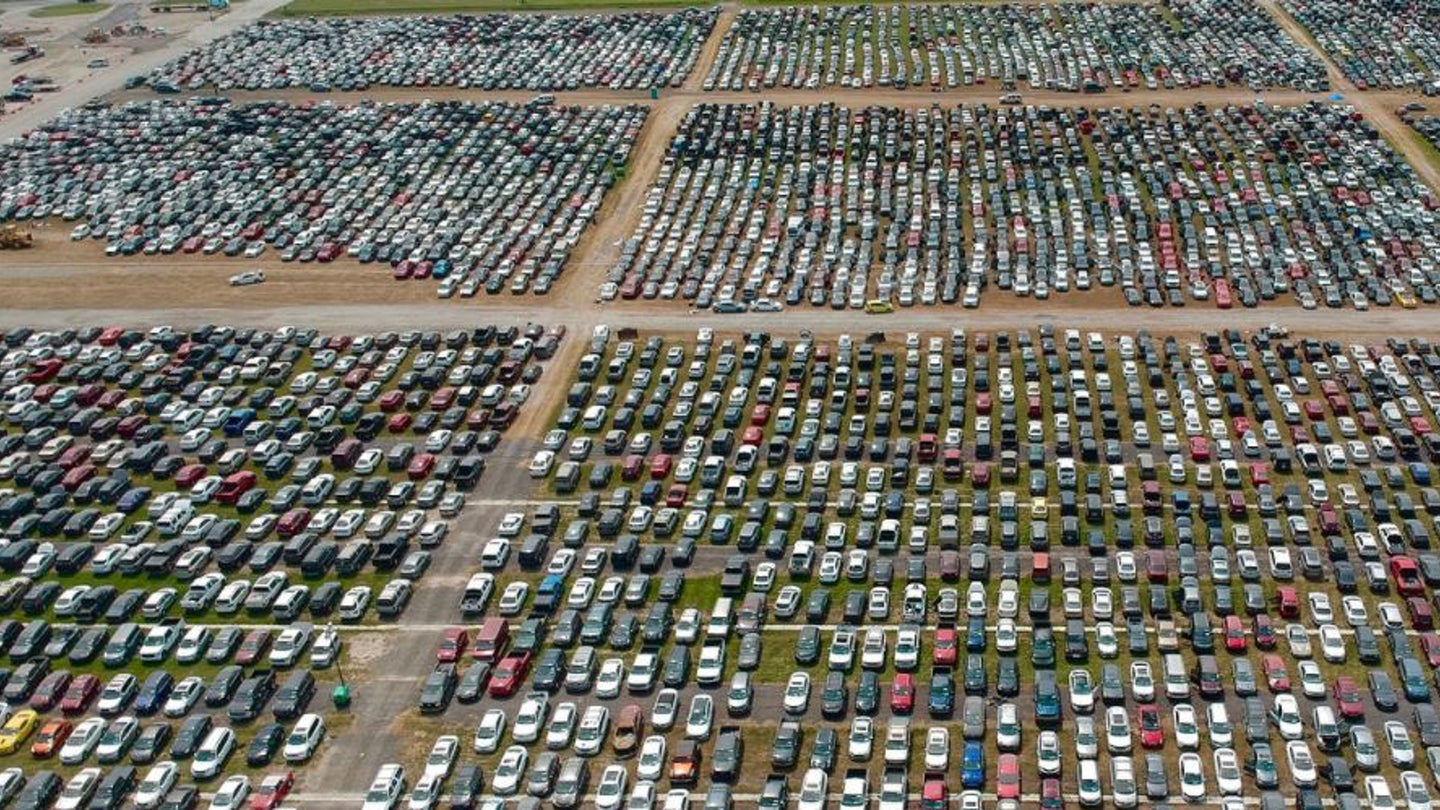How to Spot a Flood-Damaged Car
The waters may have receded, but countless problems remain in cars that have been flooded.

We may earn revenue from the products available on this page and participate in affiliate programs. Learn more ›
We've previously discussed why flood cars are problematic and probably shouldn't be put back on the road. How can you be sure of not getting caught in this trap of endless repairs? The Federal Trade Commission recently released some helpful hints about what to look for on a car to be sure it wasn't underwater in a past life.
First, check for obvious signs of being previously submerged: Water stains, mildew, sand, or silt under the carpet, floor mats, and dashboard. Also check the spare tire well, which can collect and preserve evidence of a watery fate. Examine the exterior lights to see if there is condensation or water inside them. One foggy light doesn't necessarily indicate it's a flood car, but if all of them have moisture that's a bad sign. If the carpet or upholstery look like they have been recently replaced, ask yourself why, and what could the seller be trying to hide.
Do a sniff test. It's not just the obvious smells of mold and mildew you're looking for. A soapy or ammonia smell can indicate that the car has been heavily cleaned. Again, ask yourself why and what the smell may be hiding.
Get a vehicle history report. CarFax and other services will provide you with a particular car's history for a small fee, which will reveal if it has ever been totaled, retitled, and why. The National Insurance Crime Bureau offers a free database you can search, but keep in mind that only insured cars are listed here. One-third of flood-damaged cars from last year's floods in Houston were not insured and will not appear in this database.
When looking at a CarFax report, know the difference between a "salvage title" and a "flood title." A "salvage title" means that the car was considered totaled by an insurance company, rebuilt, and put back on the road. These cars may be fine. I've personally owned a salvage title Miata, and it was one of the most reliable cars I've ever owned. A "flood title," however, means the car was totaled specifically by flooding. An extensive amount of repair is necessary to make these cars reliable again, and who knows how much of that work was actually done.
Finally, have a qualified mechanic check the car for potential flood damage. They know what to look for in far greater detail than we're going into here.
If you do come across a car being sold in "good" condition but that turns out to have been a flood car, obviously don't buy it. But also report it, either to your insurance company, local law enforcement agency, or the NICB at (800) TEL-NICB (835-6422). That'll get the car out of circulation and put it where it belongs: A junkyard.
Flood cars still have their uses. YouTuber Samcrac bought a running, driving Chevy Spark that was almost new but totaled by flood damage to donate body parts to rebuild his totaled Domino's Pizza car. But even he correctly cautioned against putting such a flood-damaged car back on the road, even though it appeared to be in much better shape than the Domino's car. The potential corrosion, especially to the electrical system, makes flood cars more trouble to put back on the road than they're worth.
